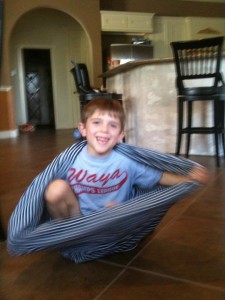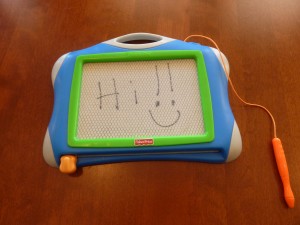Kit Item #10: Tunnels
Tunnels are one of my favorite items to include in My Obstacle Courses because they encourage cross patterning, creeping and crawling while creating a fun, movement filled transition from activity to activity.


Tunnels can be created a number of different ways. I have used dining room chairs (ones that don’t have the foot/cross bar underneath work best) in the past which helped encourage creeping and crawling. After seeing a fabric tunnel at his OT, I made my own. Click here for the post on this easy to make fabric tunnel. But one of my favorite items are collapsible tunnels. The set we got came with 5 so I can place them around My Obstacle Course in between stations. They are super easy to set up and create an instantaneous look of fun with their bright colors.
While the chairs or collapsible tunnels may not fit into a bin, I encourage you to look around at the chairs you have to see if they’d work or consider getting some collapsible tunnels fold down flat for easy storage.

Tunnels provide an easy way to add some adventure to My Obstacle Course while promoting cross patterning and gross motor movement at the same time!
Engage, Encourage and Empower!



















